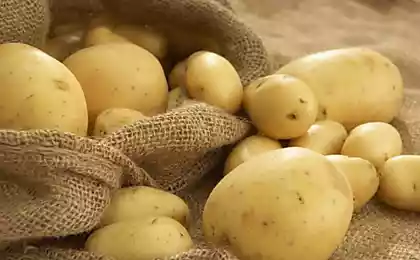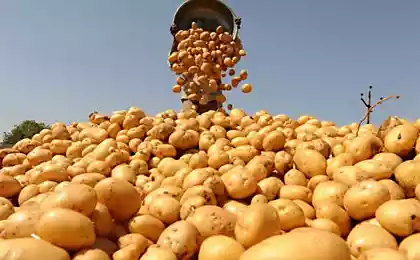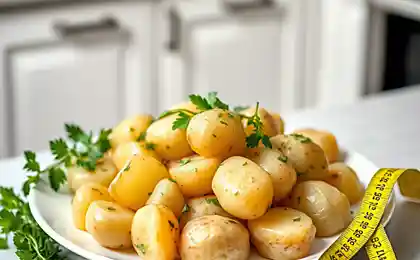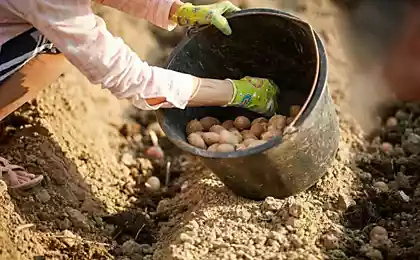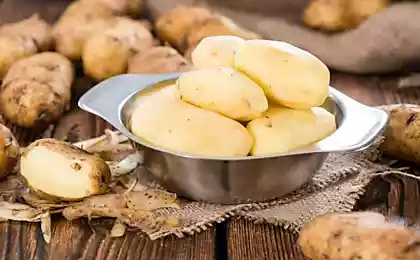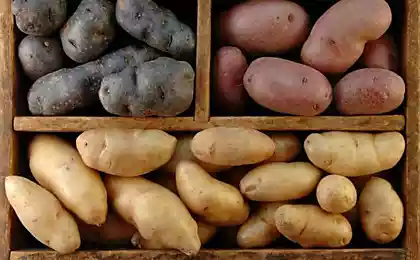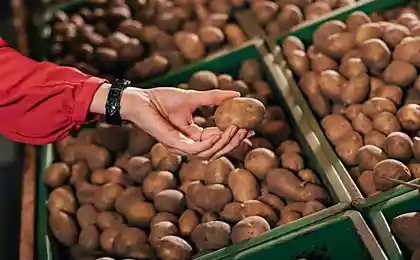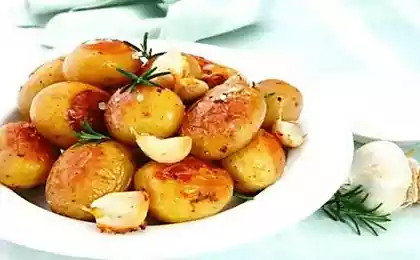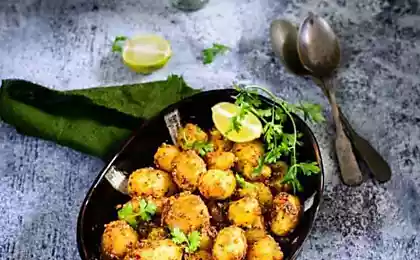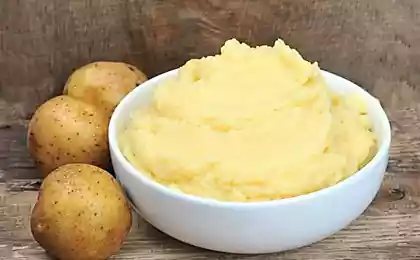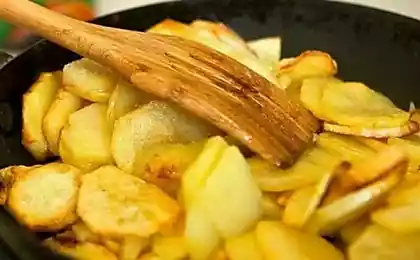130
How to germinate potatoes to get an early and very generous harvest, start cooking now
With the approach of spring, gardeners conduct preparatory work that allows to increase the yield of vegetables and accelerate the process of ripening the first fruits. In February, seeds are sown for seedlings, and in mid-March, potatoes are usually taken from the cellar for pre-germination. Planted in the ground sprouted potatoes will give the opportunity to eat young tubers two weeks ahead of schedule.

Starting to germinate potatoes, you should focus on the climatic conditions in which you live. In the southern regions, planting material is removed from the basement earlier than in the northern regions. It should be borne in mind that only after a month or a half, sprouted potatoes are ready for planting in open ground. By that time, the tubers will already warm up enough, gain strength and form shoots at least 3 cm long.
Sprouted potatoes are planted on beds when the soil warms up to +7 degrees. It is carefully lowered into a hole and sprinkled with earth so as not to damage the fragile shoots. The air temperature at that time should not fall below +8. Under such favorable conditions, potato sprouts will continue to actively develop in the hole and acquire stolons, on which young tubers will then form.
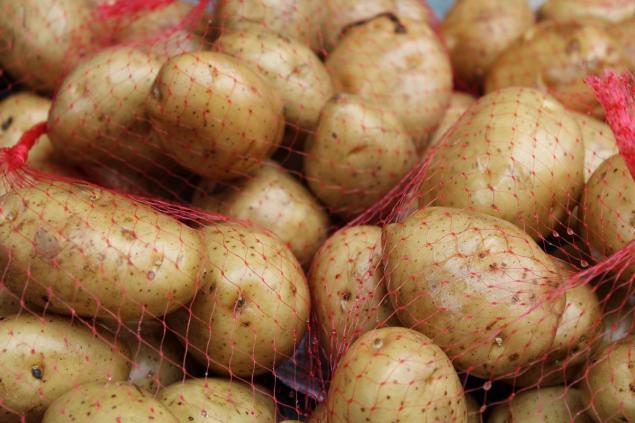
It happens that potatoes begin to shoot directly in the cellar. This happens when it is too warm. Sprouted potatoes can contain solanine, which is harmful to our health, so eating them is not recommended. Better put the tubers in the ground.
Seed potatoes must be removed from the cellar, sifted and distributed into varieties. Sluggish and rotten tubers should be thrown away. Also, you should not choose for planting specimens with a small number of kidneys, that is, the “eye”. If there are few varietal potatoes, large tubers may be cut into two or even four parts. You just need to control that each of them have kidneys.
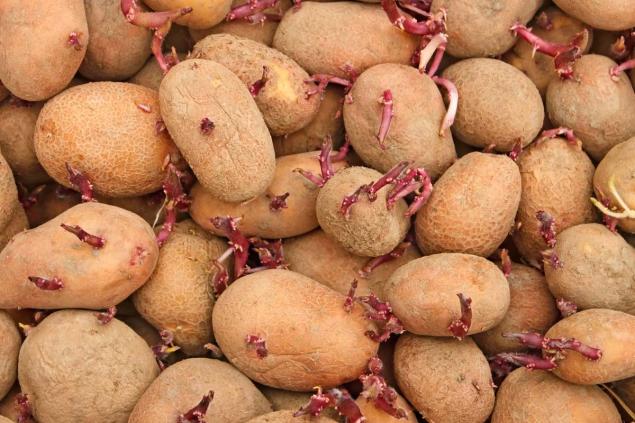
Selected planting material is advised to spread out in boxes. It is advisable to fill them up to half so that in the future the shoots are less damaged. Boxes should be placed in a room where they will be kept at room temperature. From above, they need to be covered with an old blanket or other dense fabric. If potatoes are germinated in dense boxes, then tubers can be poured with wet sawdust or sand.
Sprouted potatoes need additional sorting. When the shoots become clearly visible, the tubers must be carefully sorted. Potatoes with frail growth are rejected because they are not suitable for planting: high-quality bushes will not grow from thin sprouts. Then the boxes are again covered and put in place.
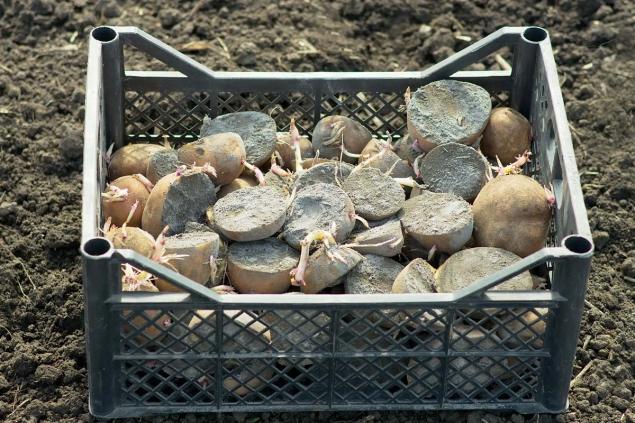
Some summer residents recommend germinating potatoes in cardboard egg trays. To do this, the tubers need to be laid out in cells so that the shoots grow in the right direction. But this is only possible if you plan to plant no more than two buckets. And owners of large gardens warm up and sprout potatoes directly in bags. They allocate less time for this, then the shoots will be short and will not break down during transportation and landing.
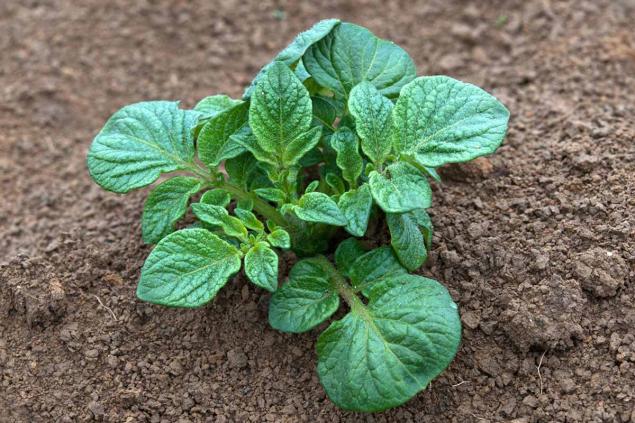
Experienced farmers begin to prepare planting material in autumn. To do this, they dry seed potatoes in the sun and give it a little “tan” to a greenish hue. Thus, the tubers are hardened, and poisonous substances are produced inside, which “spoil the appetite” of various pests. This procedure can be done in the spring. Remember that such potatoes can not be eaten!
Do you sprout potatoes before planting?

Starting to germinate potatoes, you should focus on the climatic conditions in which you live. In the southern regions, planting material is removed from the basement earlier than in the northern regions. It should be borne in mind that only after a month or a half, sprouted potatoes are ready for planting in open ground. By that time, the tubers will already warm up enough, gain strength and form shoots at least 3 cm long.
Sprouted potatoes are planted on beds when the soil warms up to +7 degrees. It is carefully lowered into a hole and sprinkled with earth so as not to damage the fragile shoots. The air temperature at that time should not fall below +8. Under such favorable conditions, potato sprouts will continue to actively develop in the hole and acquire stolons, on which young tubers will then form.

It happens that potatoes begin to shoot directly in the cellar. This happens when it is too warm. Sprouted potatoes can contain solanine, which is harmful to our health, so eating them is not recommended. Better put the tubers in the ground.
Seed potatoes must be removed from the cellar, sifted and distributed into varieties. Sluggish and rotten tubers should be thrown away. Also, you should not choose for planting specimens with a small number of kidneys, that is, the “eye”. If there are few varietal potatoes, large tubers may be cut into two or even four parts. You just need to control that each of them have kidneys.

Selected planting material is advised to spread out in boxes. It is advisable to fill them up to half so that in the future the shoots are less damaged. Boxes should be placed in a room where they will be kept at room temperature. From above, they need to be covered with an old blanket or other dense fabric. If potatoes are germinated in dense boxes, then tubers can be poured with wet sawdust or sand.
Sprouted potatoes need additional sorting. When the shoots become clearly visible, the tubers must be carefully sorted. Potatoes with frail growth are rejected because they are not suitable for planting: high-quality bushes will not grow from thin sprouts. Then the boxes are again covered and put in place.

Some summer residents recommend germinating potatoes in cardboard egg trays. To do this, the tubers need to be laid out in cells so that the shoots grow in the right direction. But this is only possible if you plan to plant no more than two buckets. And owners of large gardens warm up and sprout potatoes directly in bags. They allocate less time for this, then the shoots will be short and will not break down during transportation and landing.

Experienced farmers begin to prepare planting material in autumn. To do this, they dry seed potatoes in the sun and give it a little “tan” to a greenish hue. Thus, the tubers are hardened, and poisonous substances are produced inside, which “spoil the appetite” of various pests. This procedure can be done in the spring. Remember that such potatoes can not be eaten!
Do you sprout potatoes before planting?
Money on the savings book was a great idea, which was not destined to be realized, as I now remember that disappointment.
Experienced housewives know that in no case can not cook in aluminum dishes






